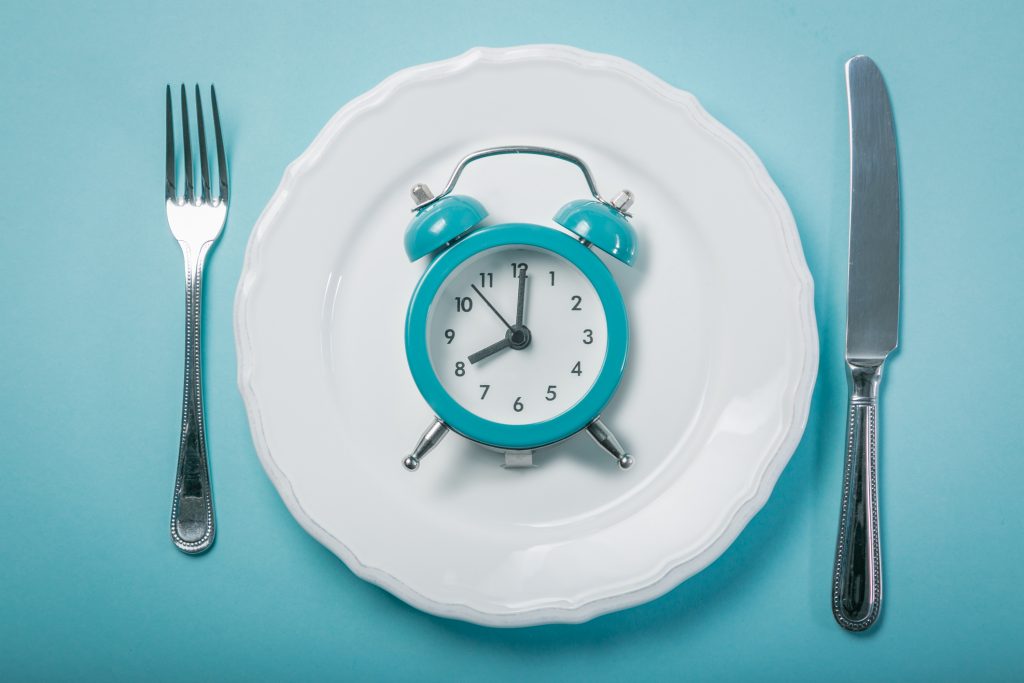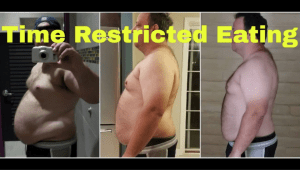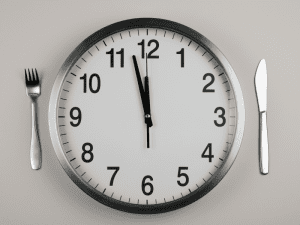Fasting

Today’s Teaching Video from Health Guru, Josh Elmore:
Homework:
Observe the average number of hours of fasting you currently have. Start opening your window 1 hour per week until you reach the desired amount.
Teaching:
Our bodies were designed to rest from food periodically. Just as we are given the seventh day to rest from our busy lives, a fast is designed to rest the digestive system. One of the main benefits of sleep is its ability to rest and restore all the body’s working systems. It is not an accident that the English named the first meal of the day “break-fast”. Unless you are a midnight eater, you fast daily whether you know it or not. Our Father is the Creator of all things, from the vast universe to the microscopic functions that keep us knitted together. He designed our bodies and our supporting systems to function best when they are given adequate rest.
Fasting – the voluntary abstinence from food and drink – is an ancient tradition, long believed to be vital to humans’ physical and spiritual health. A growing body of evidence suggests that in the absence of ready supplies of glucose and fats from meals, fasting flips a metabolic “switch,” liberating fat stores via fatty acid oxidation and ketone production while overall prioritizing the safeguarding of lean muscle mass and function. As such, fasting provides a mechanism that not only improves overall body composition but also triggers the activation of biochemical processes and signaling pathways that optimize human performance and physiological function, possibly slowing the processes of aging and disease.
Fasting also stimulates hormesis, a compensatory defense response following exposure to a mild stressor (short-term food deprivation) that is disproportionate to the magnitude of the stressor. Hormesis triggers a vast array of protective mechanisms that not only repair cell damage but also provide protection from subsequent exposure to more devastating stressors.

Fasting and the Bible:
The Word of God indicates that another benefit to fasting is spiritual healing. In Isaiah 58:6-8, God is upset with Israel for not truly fasting (with the right heart). He tells them that when they truly fast, “(their) light will break forth like the dawn, and (their) healing will quickly appear”. Just as science validates that fasting produces physical healing, Scripture assures us that fasting also leads to spiritual healing. People fasted in the Bible so that they might hear from God. When we deny ourselves by fasting, we get out of the way so that God can take priority in our lives. When we fast, we give Him the opportunity to be all that we need.
Let’s first understand the difference between the Fed vs. Fasted States:

Fed State = starts when you begin eating and lasts for 3-5 as your body digests and absorbs the food you just ate. When you are in the fed state, it’s very hard for your body to burn fat because your insulin levels are high.
Pos-absorptive State = ‘your body isn’t processing a meal.’4-12 hours after your last meal
Fasted state = 12+, much easier for you body to burn fat in the fasted state because your insulin levels are low. Here your body can burn fat that has been inaccessible during the fed state.
***Fasting puts your body in a fat burning state that you rarely make it to during a normal eating schedule.
Autophagy:
When we’re fasting autophagy happens. Autophagy is basically the body eating bad cells, like the ones that are leading to disease or are inflamed, responsible for premature aging, etc. And then the cell recreates a new one.
When you’re fasting, the body takes that energy that it would have normally put towards digestion and it puts it towards healing diseases that have been brewing in the body. And you can turn off bad genes that have been turned on by many stressors. It can also reset the microbiome. Autophagy can start happening with even just a 15 hour fast. Fasting alone can make a huge difference in the level of inflammation in the body.
Types of Fasting:
The term “fasting” is a broad one, comprising multiple types and subtypes of the practice, including intermittent, alternate-day, periodic, and others, and ranging in duration and degree of restrictiveness.
Common types of fasting:
Intermittent fasting means different things to different people, even among the research community. This lack of specificity has been a source of consternation for experts in the field of fasting, with some advocating that the phrase be retired. Often, when someone uses this phrase they may actually mean one of the following:
- Time-restricted eating
- Alternate-day fasting: As the name implies, alternate-day fasting involves fasting every other day, while eating normally on non-fasting days. In a modified version of the alternate-day fast, participants can consume a small amount of food – approximately one-fourth of their optimal intake – on fast days.
- Inflammation/Autoimmune Fasts: Modified 5 day fast to nip out inflammation. Females stick to 800 calories per day and men 1,000 calories for 5 days. Only 20g of those carbs can come from protein. All food must be God-made clean food. 16-18 hours fasted per day.
- Periodic or prolonged fasting (multi-day) – less frequently referred to as intermittent: Prolonged fasting, sometimes referred to as periodic fasting, typically exceeds 48 hours. This type of long-term food deprivation can set off a unique set of metabolic events, such as deeper ketosis as glycogen stores are depleted, which may result in some degree of cellular and systemic clean-up through programs such as apoptosis and autophagy. A typical periodic fast in the research setting lasts between 48 hours and up to 96 hours (four days).While most people can safely practice time-restricted eating, periodic fasting may be more appropriate to do under the guidance of a physician. As a safer alternative, Dr. Valter Longo has pioneered an approach that may recapitulate many of the same effects of prolonged fasting with a hyper-low calorie, low protein, higher fat diet stretched out over a longer interval of five days – a diet called the fasting-mimicking diet. Fasting-mimicking recapitulates humans’ ancient patterns of exposure and response to famine and feast, providing a means of cellular renewal and disease protection.
Here at MissionFiT, we will spend the majority of our time digging into time-restricted eating.
What is time restricted eating?
- It’s not a diet, it’s a pattern of eating.
- It’s a way of scheduling your meals so that you get the most out of them.
- It doesn’t change what you eat, it changes when you eat.
Time-restricted eating or time-restricted feeding refers to limiting food intake to certain hours of the day, without an overt attempt to reduce caloric intake. More often than not, this is what a person is referring to when they talk about intermittent fasting. The most common version of time-restricted eating is so-called “16:8” fasting where all of the day’s calories are consumed within an 8-hour window, leaving 16 hours for fasting, including the hours during which a person is asleep.
Time-restricted eating exploits the body’s innate 24-hour patterns – the genetically encoded molecular clocks present in every cell, from the complex (liver cells) to the simple (hair follicles) – and provides the body an essential downtime where it can focus on cellular repair and restoration rather than digestion. As such, time-restricted eating may trigger some beneficial health effects, such as reduced fat mass, increased lean muscle mass, reduced inflammation, improved heart function with age, increased mitochondrial volume, ketone body production, improved repair processes, and enhanced aerobic endurance.
Why time restrict eat?
- Great way to get lean without going on a crazy diet or cutting your calories down to nothing. In fact, most of the time you’ll try to keep your calories the same when you start intermittent fasting.
- Good way to keep muscle mass on while getting lean.
- Requires very little behavior change. This is a very good thing because it means intermittent fasting falls into the category of “simple enough that you’ll actually do it, but meaningful enough that it will actually make a difference.”

Benefits:
Lowers Insulin, Blood Pressure, Improves Cholesterol Profile and Alzheimer’s Prevention. Fasting also promotes “Autophagy”- the process by which unhealthy cells eat themselves.
-
Makes your day simpler.
The reason most diets fail isn’t because we switch foods, it’s because we don’t actually follow the diet over the long term. It’s not a nutrition problem, it’s a behavior change problem. This model is just a behavior change. It’s simple, and actually reduces stress. When you wake up, don’t worry about breakfast. Just grab a glass of water and start your day.
-
Helps you live longer.
Scientists have long known that restricting calories is a way of lengthening life. From a logical standpoint, this makes sense. When you’re starving, your body finds ways to extend your life. More recently, this study found that alternate day intermittent fasting led to longer lifespans.
-
May reduce the risk of cancer.
this comprehensive analysis of many studies on fasting and disease has concluded that fasting appears to not only reduce the risk of cancer, but also cardiovascular disease.
Time Restricted Eating/Intermittent Fasting vs. Long Term Fasts
Mentality: Difference is brushing your teeth daily and going to the dentist. Short term missions (evangelism) vs. long term missions (discipleship).
Phasing In:
14 hour window – women
16 hour window – men
*Incrementally work towards this adding in 1 more hour per week, closing in on the “feeding” window.
I thought you were supposed to eat every 3 hours?
You may have heard people say that you should have six meals per day or eat every 3 hours or something like that.
Here’s why this was a popular idea for a brief period of time: Your body burns calories when it’s processing food. So the thought behind the more meals strategy was that if you ate more frequently, you would also burn more calories throughout the day. Thus, eating more meals should help you lose weight.
Here’s the problem: The amount of calories you burn is proportional to the size of the meal your body is processing. So, digesting six smaller meals that add up to 2000 calories burns the same amount of energy as processing two large meals of 1000 calories each. It doesn’t matter if you get your calories in 10 meals or in 1 meal, you’ll end up in the same place.
Furthered Learning Articles On Today’s Topic:
https://www.foundmyfitness.com/topics/fasting
https://www.healthline.com/nutrition/10-health-benefits-of-intermittent-fasting#section1
https://www.medicalnewstoday.com/articles/322365.php
https://www.cosmopolitan.com/health-fitness/a8879791/time-restricted-eating-for-weight-loss/




